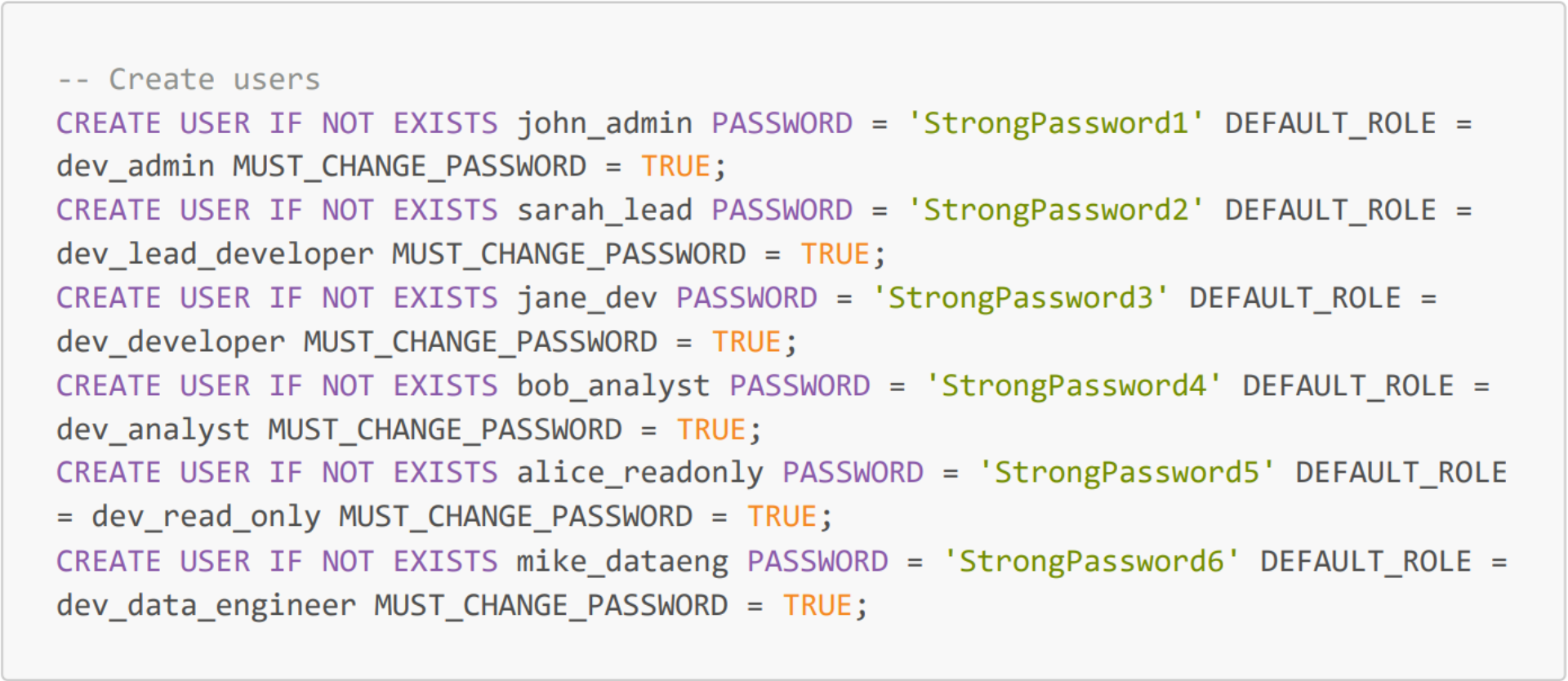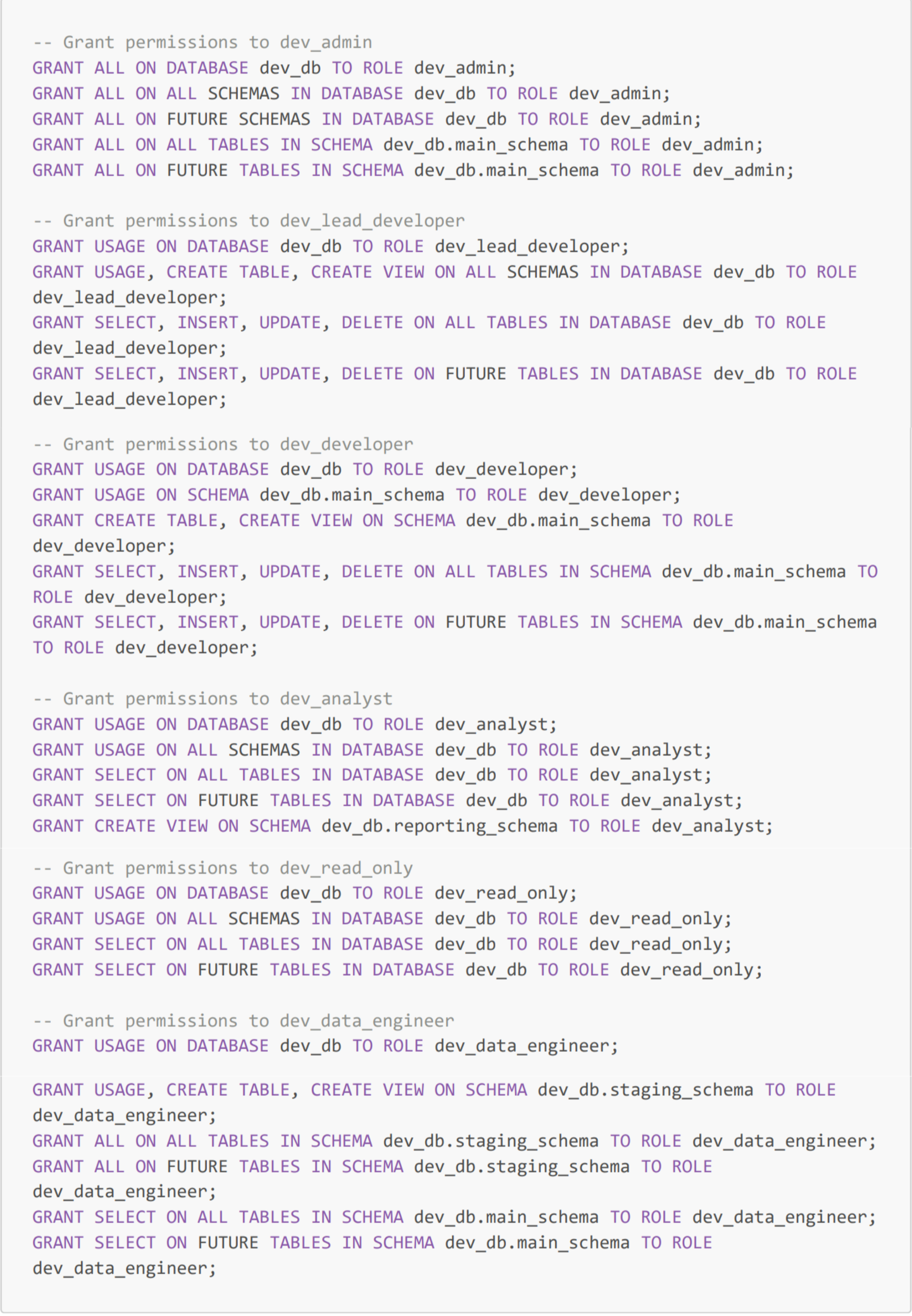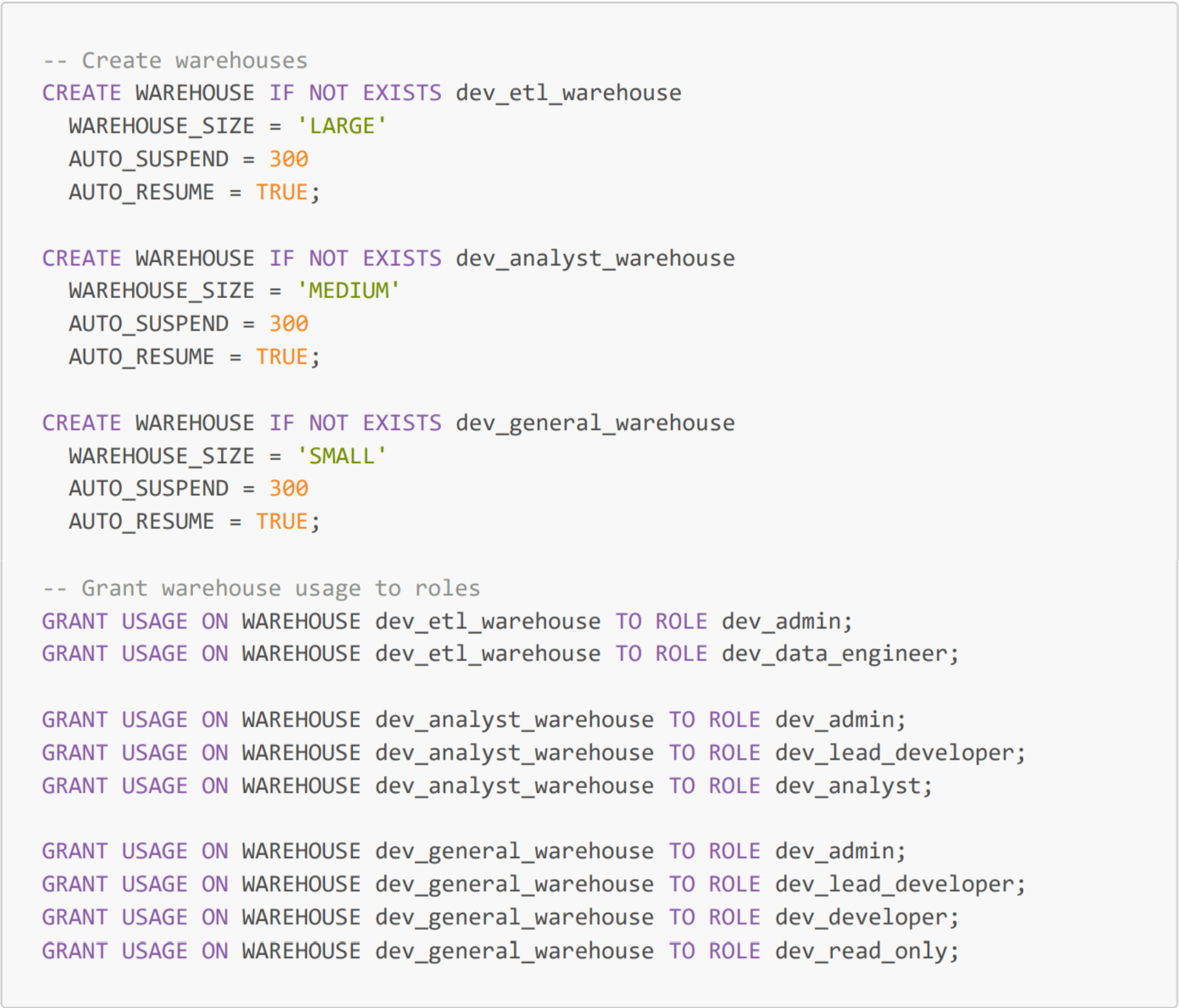Securing Your Snowflake Development Environment with RBAC
In today’s data-driven world, safeguarding sensitive information is paramount. Role-Based Access Control (RBAC) is a cornerstone of data security that ensures only authorized individuals can access specific data and perform designated actions. This blog delves into how we implement a robust RBAC framework in our Snowflake development environment to protect your valuable data.
Key Terms
Before we dive into the setup, let’s clarify some essential terms:
- RBAC: A security model that controls access to system resources based on users’ roles within an organization.
- Role: A collection of permissions granted to users based on their job responsibilities.
- User: An individual account that can access Snowflake.
- Warehouse: A cluster of compute resources for executing queries.
- Database: A container for data objects.
- Schema: A logical grouping of database objects.
- Grant: Assigning specific permissions to a role or user.
- Privilege: The type of operation allowed on a Snowflake object (e.g., SELECT, INSERT, UPDATE).
Our RBAC Framework
To establish a secure development environment, we’ve implemented a granular RBAC structure encompassing multiple roles, warehouses, and schemas. These terms and their explanations are given below:
Elevate Your Snowflake Journey with Hoonartek's Expert Solutions!
Contact Hoonartek today and discover how our Snowflake services can help you achieve your business goals!
Creating Roles
We’ve created distinct roles to cater to various user responsibilities:
- dev_admin: Possesses full control over the development environment.
- dev_lead_developer: Enjoys elevated privileges compared to regular developers.
- dev_developer: Standard role for developers with essential permissions.
- dev_analyst: Primarily focused on data analysis with read and limited write access.
- dev_read_only: Restricted to viewing data without modification capabilities.
- dev_data_engineer: Manages data pipelines and transformations.

Creating Users
We assign each user to a specific role based on their job function. For instance, John, our development administrator, is assigned the dev_admin role.

Granting Roles to Users
Once users are created, we meticulously grant them appropriate roles to ensure they have the necessary permissions.

Establishing Database and Schemas
We create a dedicated development database with multiple schemas:
- main_schema: For core development activities.
- staging_schema: For intermediate data processing.
- reporting_schema: For final, polished datasets.

Assigning Permissions
Each role is granted specific permissions based on their responsibilities. For example, dev_admin has unrestricted access, while dev_read_only is limited to data viewing.

Creating Warehouses
We set up different warehouses to optimize resource utilization:
- dev_etl_warehouse: For heavy data processing tasks.
- dev_analyst_warehouse: For analytical queries.
- dev_general_warehouse: For general development activities.

Verification
To ensure the RBAC setup functions correctly, we employ verification queries to list roles, users, grants, schemas, and warehouses.

Additional Security Measures
To bolster security, we strongly recommend using strong, unique passwords and implementing Snowflake’s network policies and multi-factor authentication.
Conclusion
By meticulously designing and implementing this RBAC framework, we create a secure development environment that protects sensitive data while empowering users with appropriate access. This approach enhances data governance, reduces security risks, and optimizes resource utilization.
Ready to elevate your Snowflake security? Hoonartek offers comprehensive RBAC implementation and consulting services. Our experts can help you establish a robust security posture and unlock the full potential of your data.
Visit our Snowflake Services page to know more about our services: https://hoonartek.com/partners/snowflake/
Contact us today to learn more about our Snowflake solutions.

Amol Patil
Amol Patil is an Associate Consultant with expertise in AWS, Snowflake, and Azure cloud platforms. Certified in these technologies, he leverages SQL, Python, and tools like Airbyte and Airflow to build robust data pipelines. His experience includes ETL development using Azure Data Factory, Snowflake security configuration, and data migration from diverse sources.


